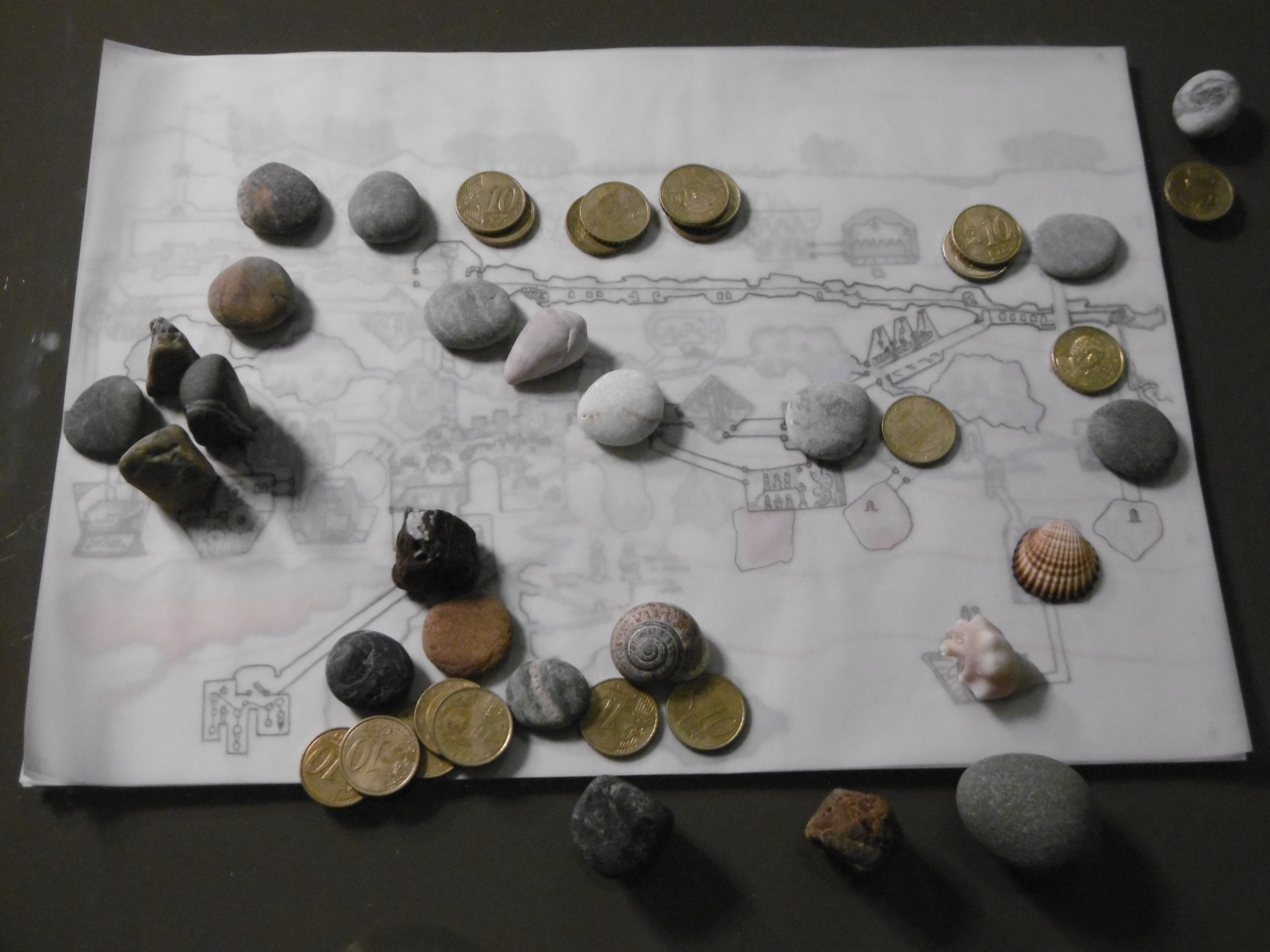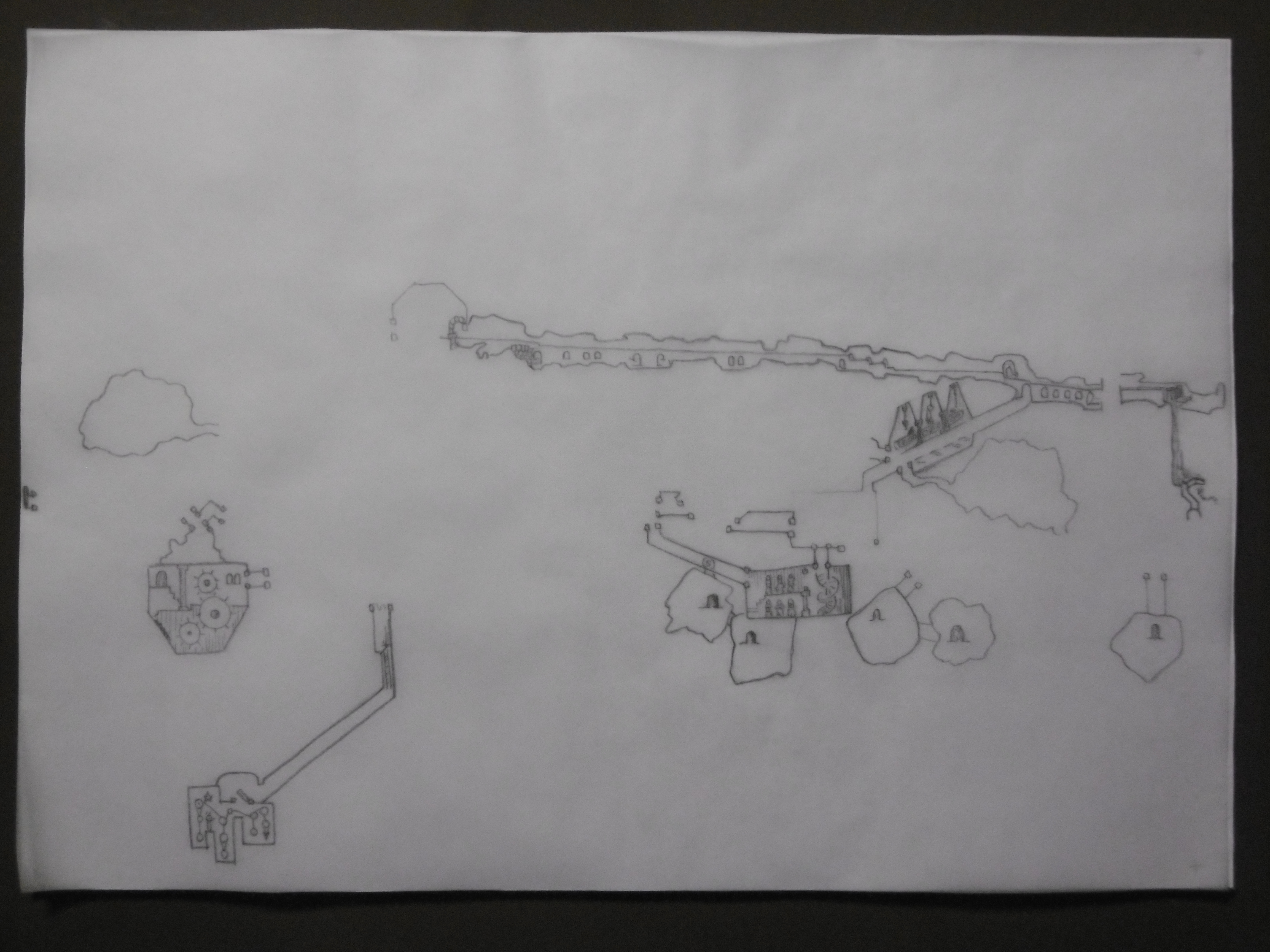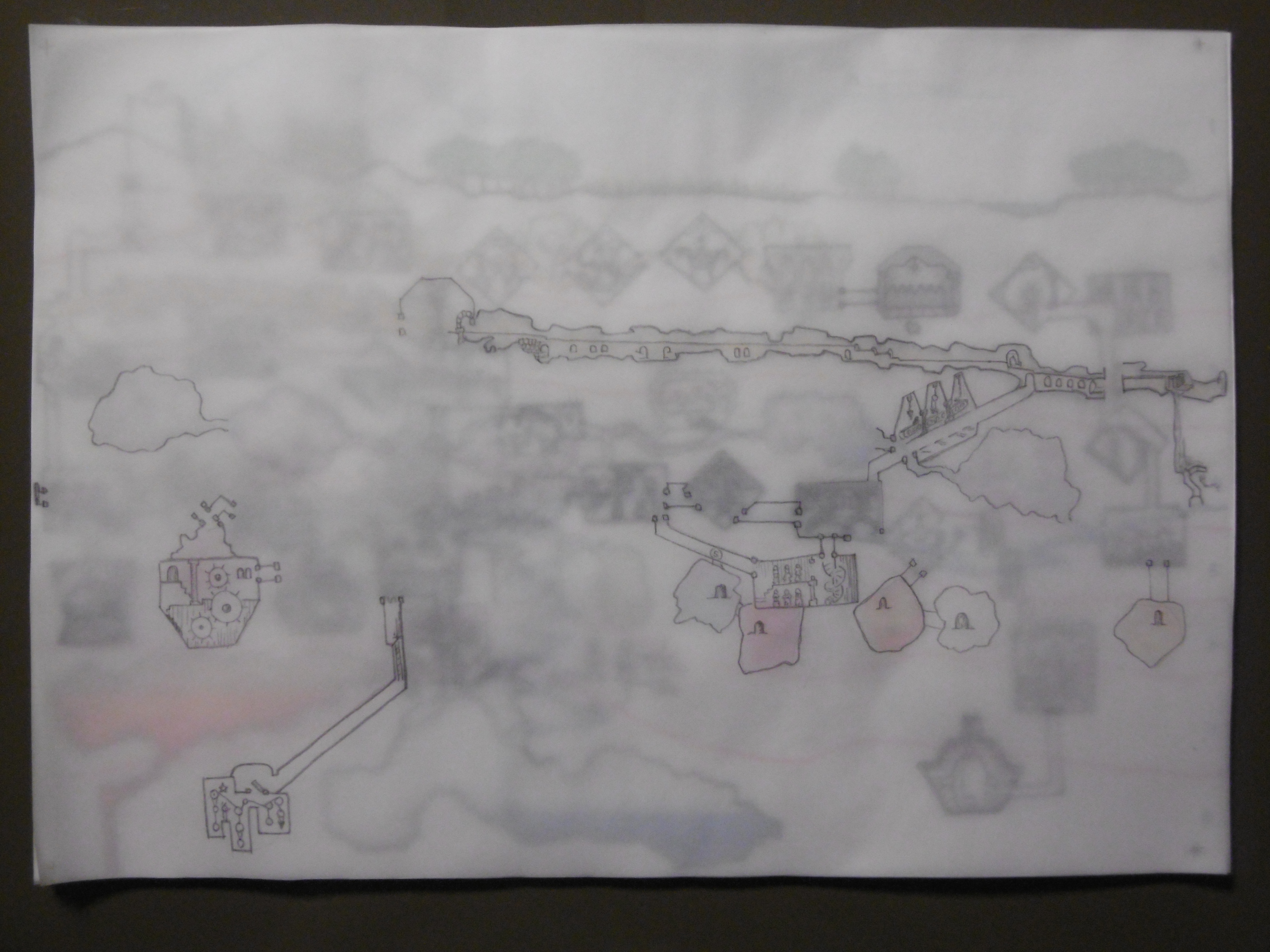In time the Throrgrmir dwarves recovered from the civil war. They built a power plant, which drove production higher, and they made a highway, which reached subterranean neighbors to the east and west. Increased communication fostered the exchange of goods, services, and skills and, so, ushered in a rebirth of the Throrgrmir civilization.
Meanwhile, in the Deepmost Caverns, trouble—in the form of wyrmlings1—hatched from eggs. The first attacks on Throrgardr’s gate were repulsed, but the wyrmlings persisted and they grew in number.
Eventually, the wyrmlings sneaked around the gate, swimming up the river, and defeated the dwarven defenders in frontal assaults. They prowled corridors, seeking treasure and decimating dwarven populations.
Despite this constant threat, the dwarves continued their mining operations and construction projects. Beside the highway, they built an assembly line. Progressing along the road, visitors entering the realm followed products as they were assembled on this magnificent testament to dwarven ingenuity.
The dwarves also continued Eitri’s work from the previous age, building the aqueduct that carried water from the screw as well as a drain. A valve directed water into an unused cavern or back into the river to recycle water in time of upstream drought.
They also added a sewer beneath the city’s graffhellar.2 The system extended beyond the city, servicing inhabited areas throughout the realm.
As their crowning achievement, the Throrgrmir dwarves constructed an impossible machine. It was an engine that produced more energy than it consumed. By feeding its output back into the machine, it ran by itself at the pull of a lever.
With this energy source, they built an entire hall adorned with statues of granite, crystal, gems, and iron (which they invented on a day off). Not simple carved figures, these statues were animated with a life force.
But the dwarves suffered from the wyrmling attacks. The crystal and gem mines were played out. Facing a bleak future, clans began to emigrate, and their numbers dwindled.
Finally, three wyrmlings attacked the gate and traversed Throrgardr. On the city’s outskirts, they ravaged a graffhellir. The dwarves successfully fought off the attackers, driving the wyrmlings back to their lair. But it was to be their last victory. The wyrmlings returned in a relentless onslaught, destroying clans and stealing treasure.
So, in a mass exodus the remaining clans departed, taking all the wealth they could carry.3 The primordial wyrm crept into the abandoned city, gathering wyrmlings to her, and the Throrgrmir civilization came to an end.

Notes
1 By now, the dwarves named the wyrm “Ormr” (serpent), and its offspring they called frekormr, (greedy snake) or frekr for short, and more derogatory, thjofrormr (thief snake).
2 Graffhellar (canal + caverns): Throrgardr’s administrative areas akin to city quarters. Also used for areas outside the city. Singular graffhellir.
3 Had the wyrmlings not so depleted the population, the civilization would have ended in an industrial accident. The impossible engine, producing evermore energy, would eventually explode. The departing dwarves, with a pull of the lever, switched off the machine. Should the lever ever be pulled again…


Pingback: Champions of Chaos – DONJON LANDS
Pingback: Monsters are Coming – DONJON LANDS